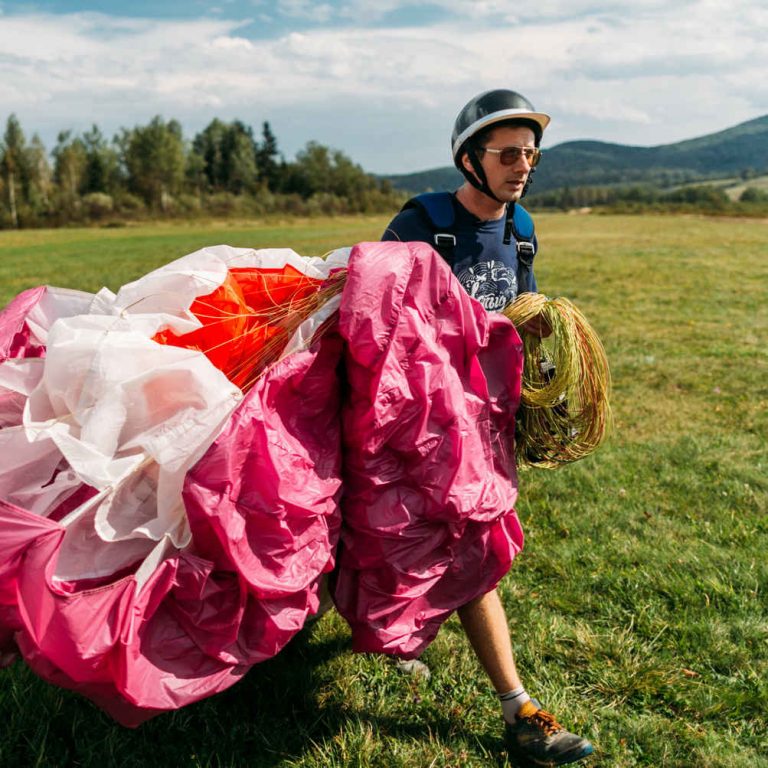Stepan Krasilich is an experienced aviator who both flies and teaches others how to. He made his lifelong dream to teach others the basics of aviation come true after building an airfield and base in Lukvytsia, his native Carpathian village. This is a story about how you should always pursue what your heart calls out for.
Stepan Krasilich was captivated by the sky at an early age. As a boy, when taking his cows out to pasture, Stepan would climb a pear tree and cut a branch into the shape of an aeroplane, letting his imagination fly:
“I would visualise it was a plane because I was so high up and with the cow seemingly in the distance, I would fly in my imagination.”
As a young man he joined the army, and was finally asked the long-awaited question: whether he would agree to fly. That’s how he got into the school of front-line aviation bombers.
Lukvytsia thought that all was lost when he began the helicopter section of his studies, since during this part they only flew a few times a year. However, a pilot by the name of Naidenko saved the situation by taking Krasilich on board his MI-6 helicopter. From then on they began to fly together.
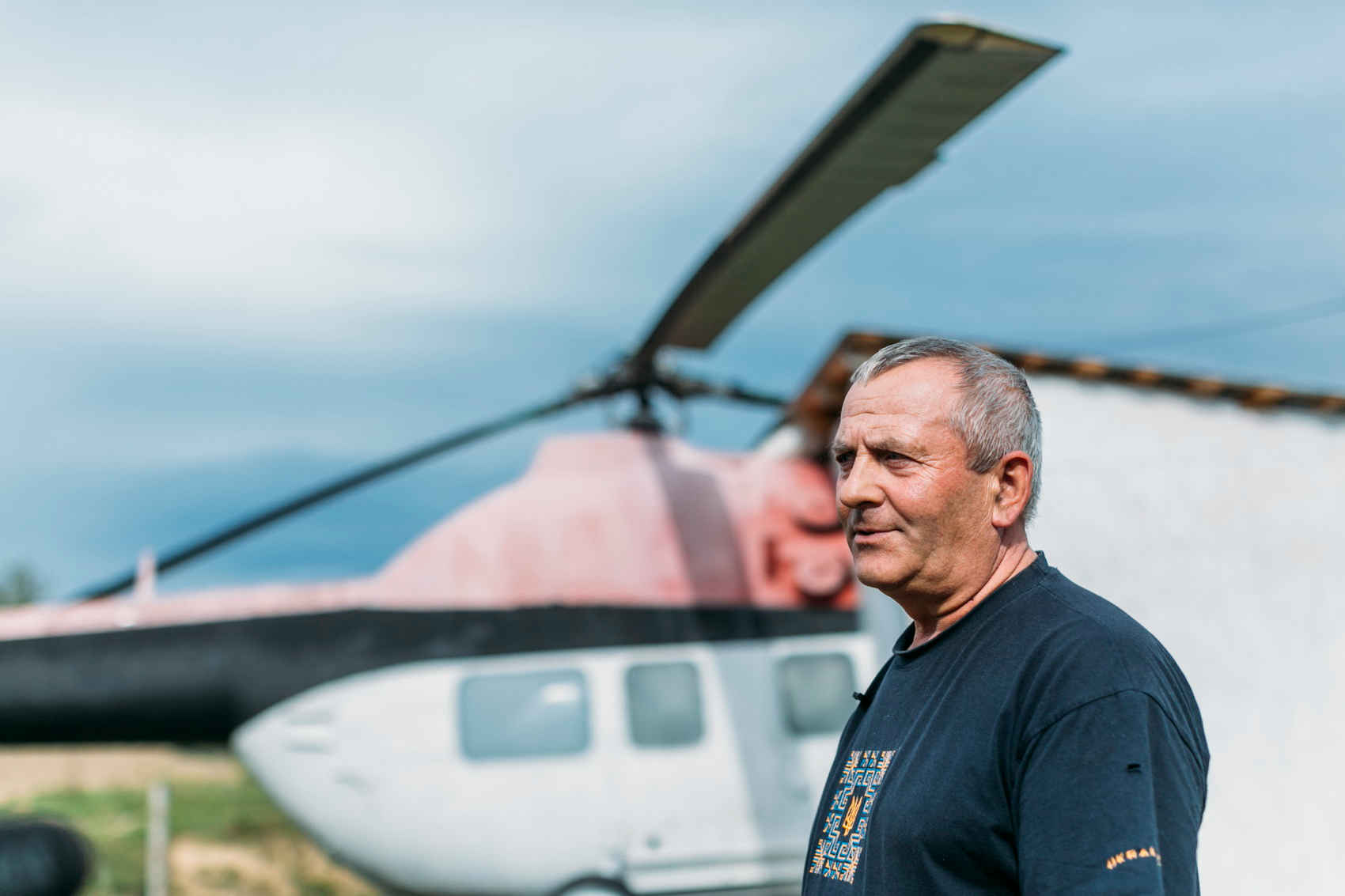
With time, the men’s life paths diverged. Naidenko went to study at the academy and Stepan Krasilich started working at Aeroflot. From the MI-6 he moved on to boarding the IL-28, the first Soviet jet bomber, and was transferred to two new location sites, the cities Kansk and Sverdlovsk in Russia. His dream became a reality.
Stepan used every opportunity to be as close as possible to aviation. While working for Aeroflot, Stepan Krasilich came to Vinnytsia, where he also worked as a flight engineer-tester at a local aircraft factory for some time.
But as is always the case, the fulfillment of one desire always creates a new one ― something more original, more ambitious. That’s when Stepan Krasilich began planning to create his own airfield so that he could take up his favourite hobby independently of others.
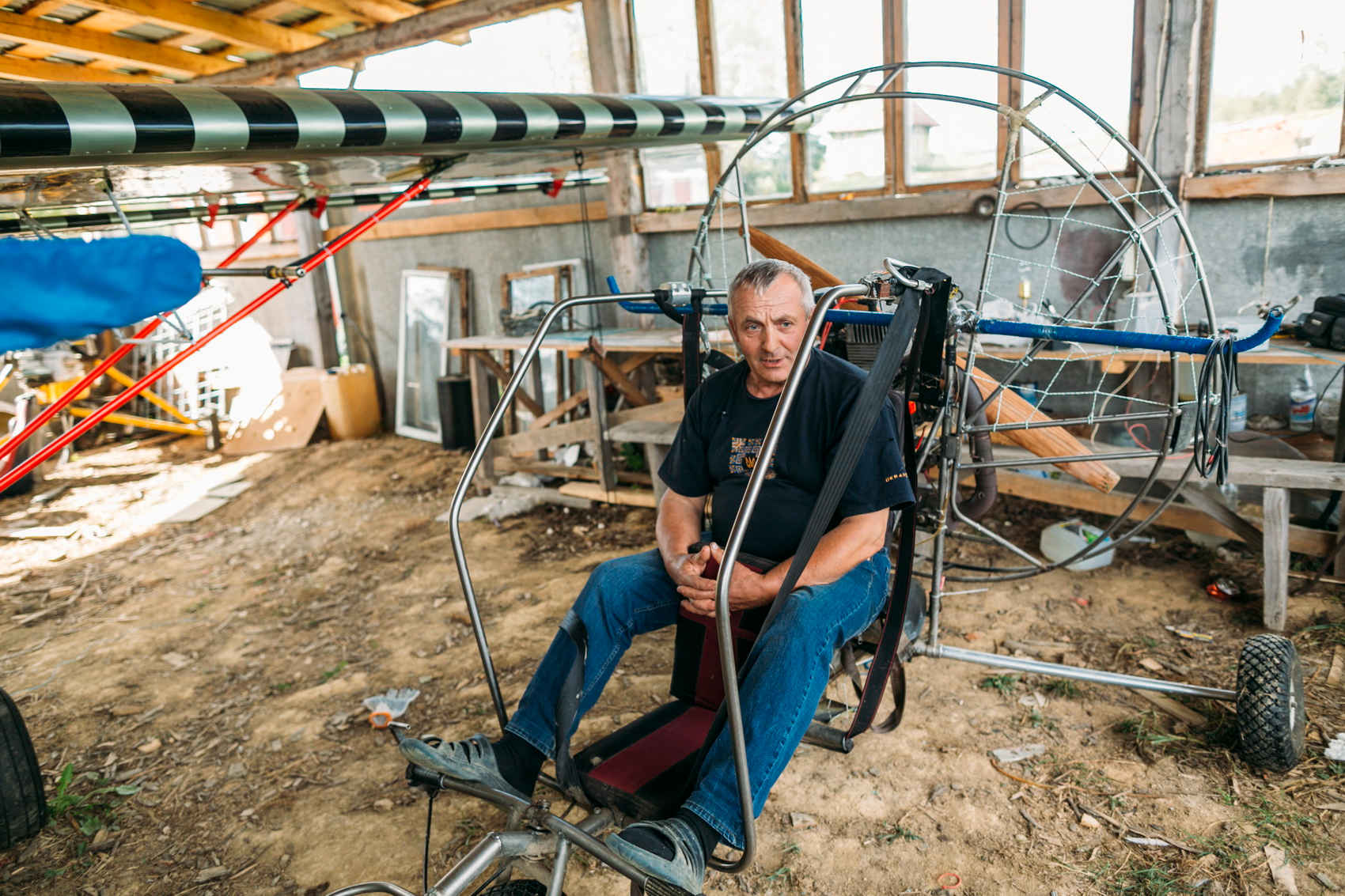
The airfield. The beginning
During Soviet times, Stepan had to hide the idea of a future airfield, masking it as a food program that was mandatory at the time. He made up a story that he wanted to start a beekeeping business in the area and proposed that he would build hives.
In the beginning, Stepan Krasilich addressed his request to build an airfield to the commander of the flight squad, who assured him that nothing would come out of this idea.
Then, Stepan decided to turn to the head of the Lukvytsya collective farm for help. He visited the head a few times on his motorcycle. And every time his request was denied. So, when Stepan was visited by his old friend, former commander Valery Shcherbakov, they went together to yet another meeting. But, most importantly, not on a motorcycle but in a helicopter.
I told him (the head ― ed.), that we want to be part of the food program, and he isn’t a stupid man, he understood everything. And he told me: “You want a pond here, a bathhouse, a sauna, a cabin. Do I understand correctly?”
“‘That’s right, Gnat Vasilyevich.’ He extends his hand and says: ‘A favour for a favour’. We shook hands and he began to do the paperwork.
And so we did all the paperwork, from the beginning and up to the executive committee. And then the commander of the flight squad threw it all away. But when I got into the National Scout Organization of Ukraine and offered this place, I already had some experience. And that’s how it happened.”
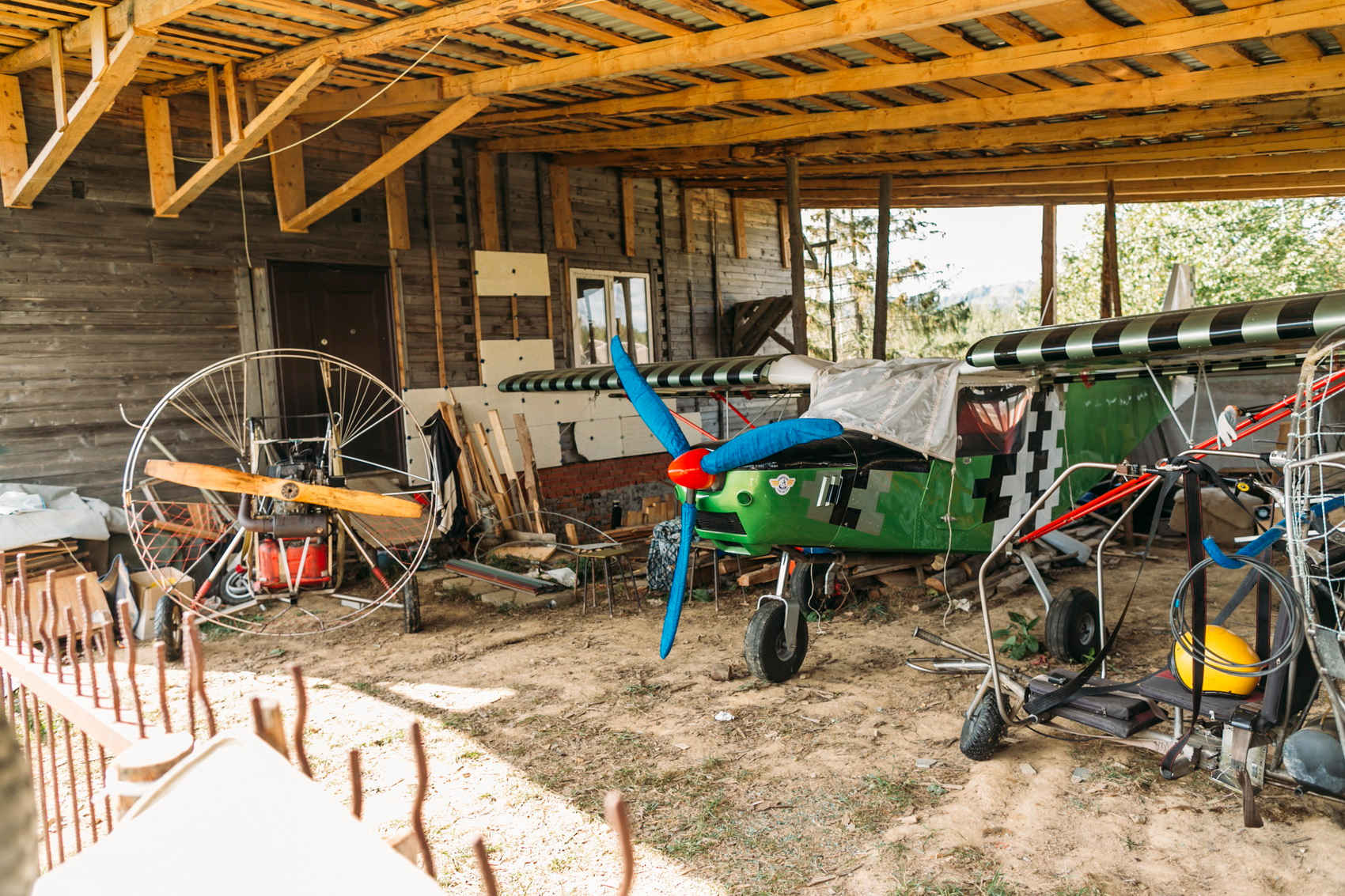
Marina Robinson (Krasilich)
Stepan Krasilich’s aunt Marina Robinson (maiden name — Krasilich) lives in Australia. During the war, when she was only 14 years old, Marina was moved to Germany for forced labour. Then she married an American, whose mother was also Ukrainian. Marina and her future husband found themselves in the same displaced persons camp. After the defeat of Nazi Germany, the young couple married and moved to Australia.
A lot of time has passed since then and Marina Robinson came to Ukraine. With the arrival of his aunt, Stepan Krasilich learned some facts from his family biography, which gave him an idea of where this deep desire to fly came from.
As aunt Marina recalls, Stepan Krasilich’s grandfather flew on a wooden plane during the First World War, fighting on Austria’s side:
“He was hit and was taken as a prisoner in Sicily. He received a big pension from Austria and Poland. But when the Soviet government came to power, it cancelled everything. In Australia, I went to every aviation museum, and I found a plane just like the one my dad used to fly.”
Now Marina Krasilych is 90 years old and, despite her age, she is very socially active: she organizes fundraising for the development of the “Chota Krylatykh” camp.
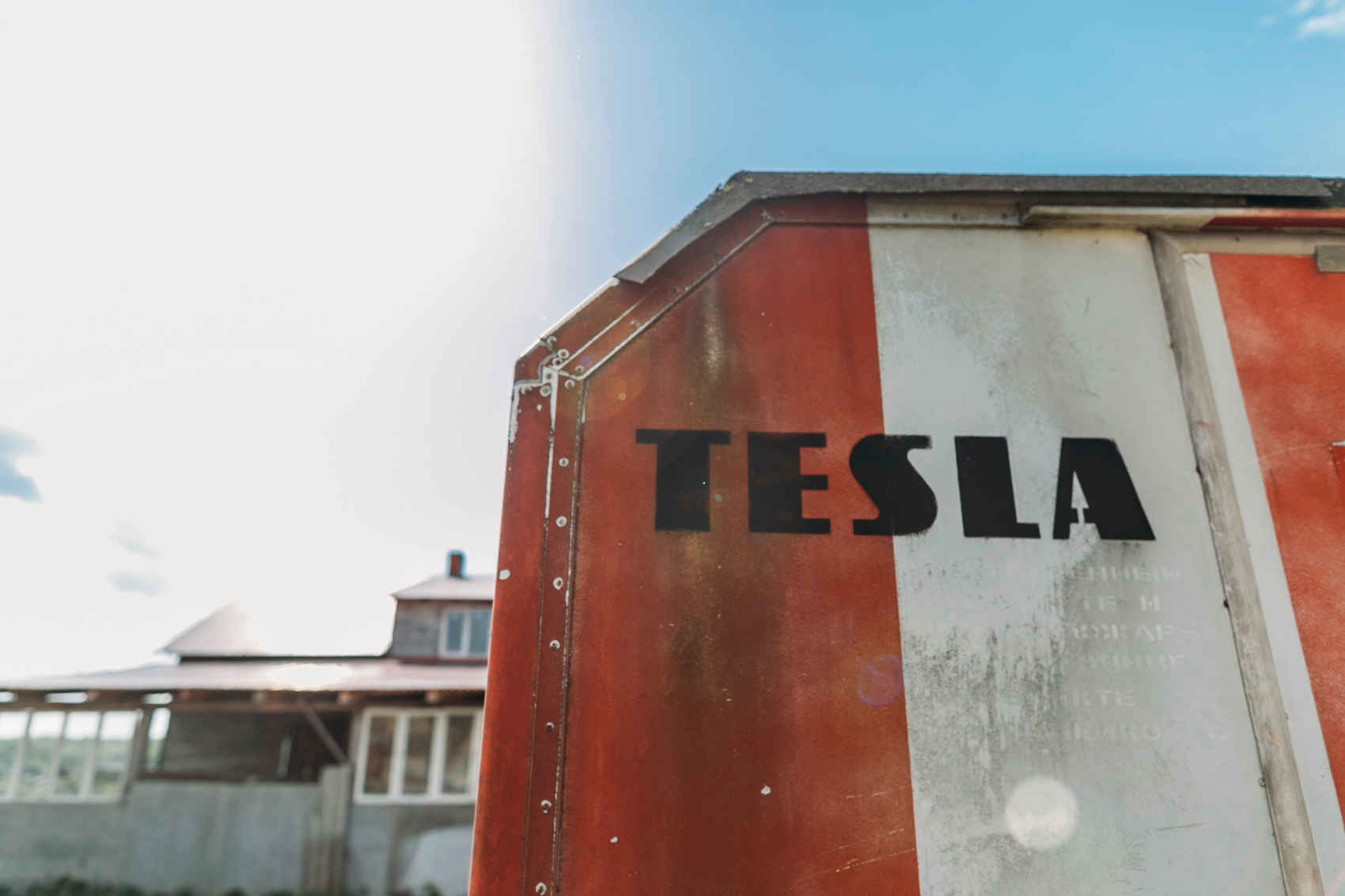
College
When a college specializing in the production of aviation and space rocket aircraft was opened in Dubovo, Transcarpathia, Stepan Krasilych went there with a proposal:
“I came to Dubovo and signed a contract that I would bring in students, and then the admissions committee came here (to Lukvytsia — ed.). Those who wanted to study came here, passed their exams and were immediately issued their student tickets. 28 people from our district and Sasha (the son of Stepan Krasilich — ed.) also graduated from the Faculty of Aviation and Rocketcraft Production.”
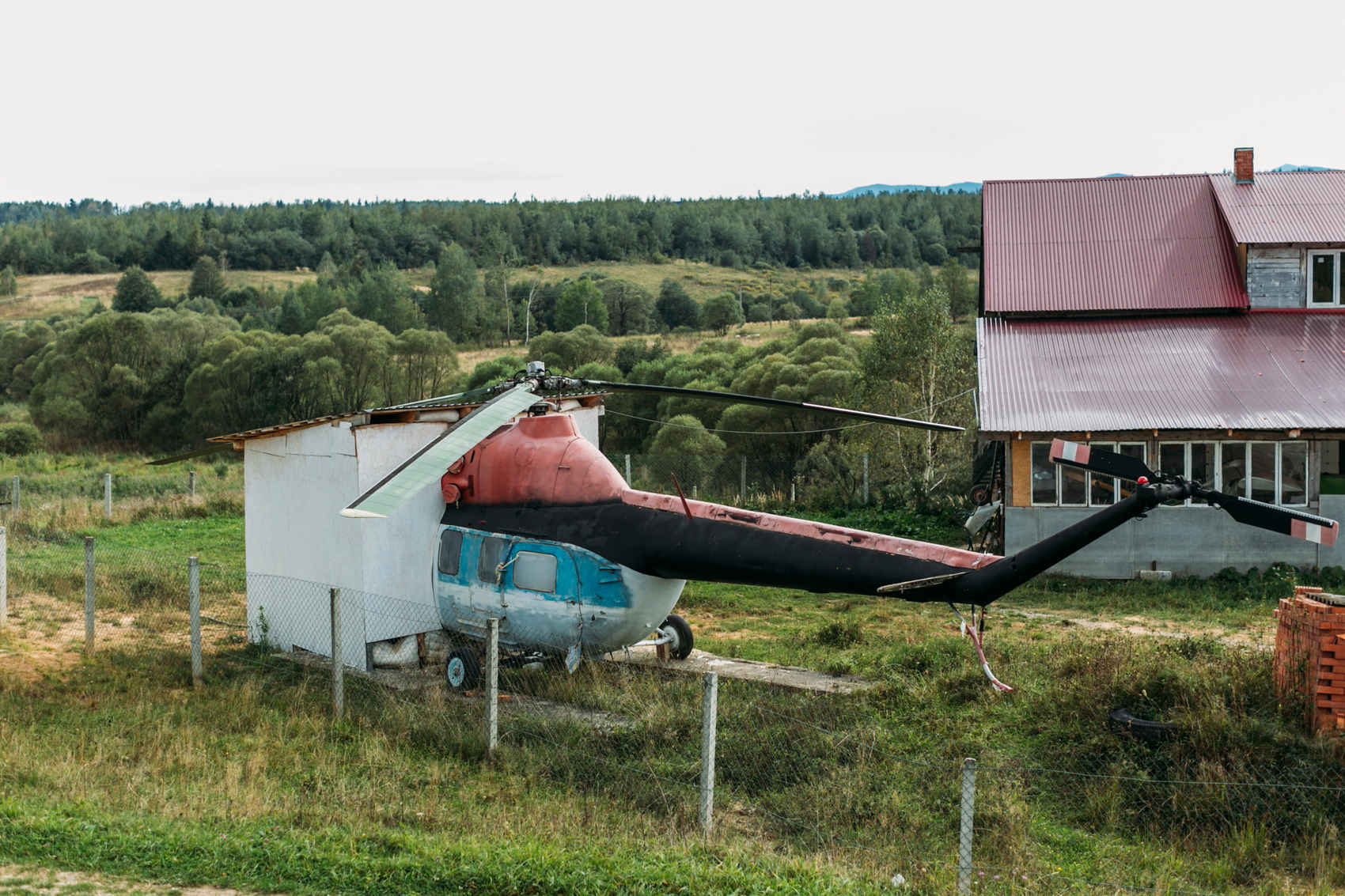
Stepan Krasilich describes an interesting event related to college, that describes both him and what he does:
“One woman came to visit me and said: ‘Sir, you were highly recommended to me, so I decided to come, my daughter just finished 11th grade. With a gold medal! But I don’t have the money to send her to study and I was told to come to you’. And I asked her: ‘Do you have a cow?’. She answered: ‘Yes, I do!’. ‘Well, then bring the papers that you need to get into college, your child, a litre of sour cream, a lump of cheese, and then come here’. She says: ‘I’m being serious’. And I told her: ‘So am I! If you don’t have sour cream and cheese, just come with your child and the documents.’ And at that time she came, with a lump of cheese and a litre of sour cream, and then the girl graduated from college with honours. That’s the story.”
The college only existed for 4 years. The Faculty of Aviation and Rocketcraft Production, which was established on the basis of the college was deemed inexpedient. Stepan Krasilich was offered to stay and work for the college to do organizational work, but he flatly refused.
“Well, because I’m an aviator. Our job is to promote aviation among young people. And there is definitely someone else to teach accounting over here.”
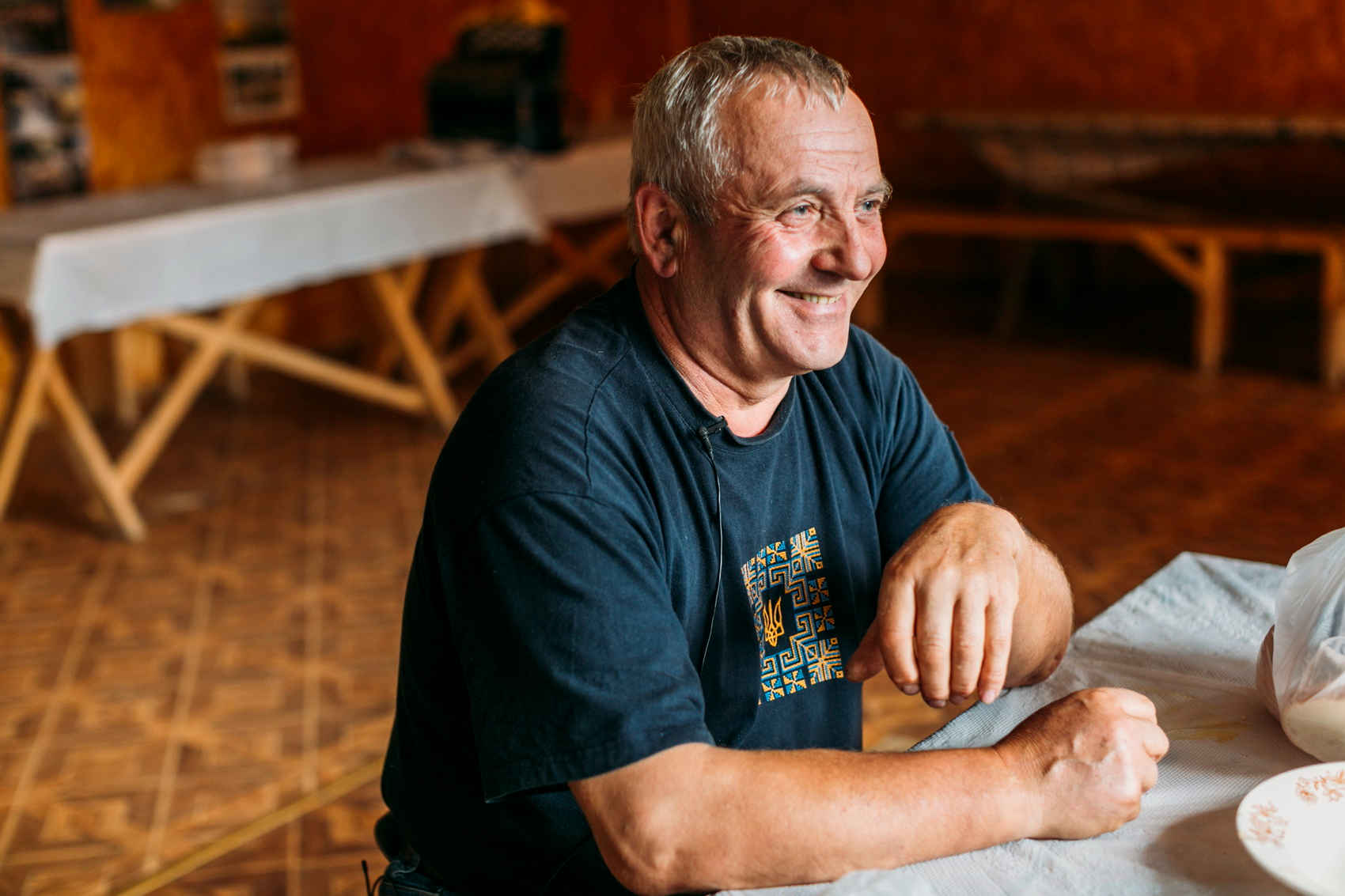
“I don’t just love what I do, I am doing a good deed for the state. I can brag about it if I want to, but I also don’t need to. But if you and I were a state, would you not want the young people who will continue to lead it to have a state mentality and understanding? If we had a good nation, it would provide funding for such places, for the education of young people.”
“Well, because what is the economy? The economy is nonsense. If there are no trained young people who will keep up the state, then the economy is only good for the enemy: he will come and take away what was built. And if young people are patriotic, they will first lay the groundwork, and the economy will build itself. It can’t be any other way.”
Chota Krylatykh
To popularize aviation among young people, Stepan Krasilich and his son Oleksandr hold a scouts camp called “Chota Krylatykh” every year.
The camp was founded in 1997, more than a decade ago. The program of the camp changes every year according to the chosen legend. The mandatory groups are: aerodynamics, air traffic rules, paragliding, hang gliding, aircraft modelling, aircraft construction and design and aviation meteorology.
After learning the theory and successfully passing ground training, participants are allowed to fly. The Federation of Paragliding Sports of Ukraine has granted “Chota Krylatykh” the right to award degrees to novice pilots. That is how the camp allows young people to get one step closer to the sky.
As part of the camp, Stepan Krasilich also holds the All-Ukrainian Festival of Moto-paragliding. Participants have the opportunity to see aerobatics on paragliders, moto-paragliders, paratrikes, hang gliders and motor hang gliders.
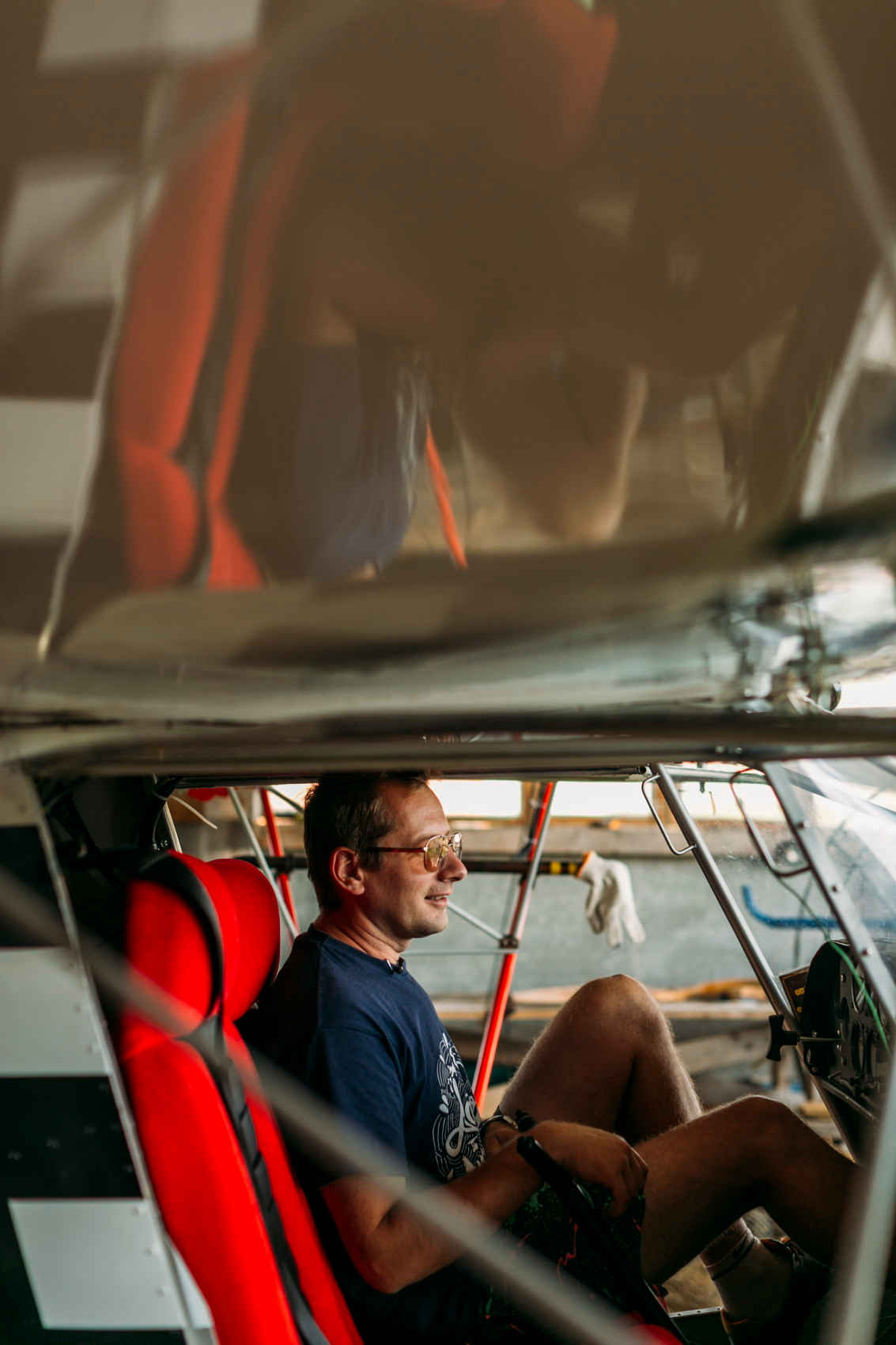
The flight simulator
On the territory of the airfield in Lukvytsya, there is an MI-2 helicopter, which has not been in working condition for a long time. It is used here as a flight simulator.
You can turn on a variety of effects on it: from the usual buzzing of the helicopter to the simulation of turning on the right and left engine. All this is done to make the flight simulation closer to reality. The flight simulator allows you to choose the destination of any airport in the world.
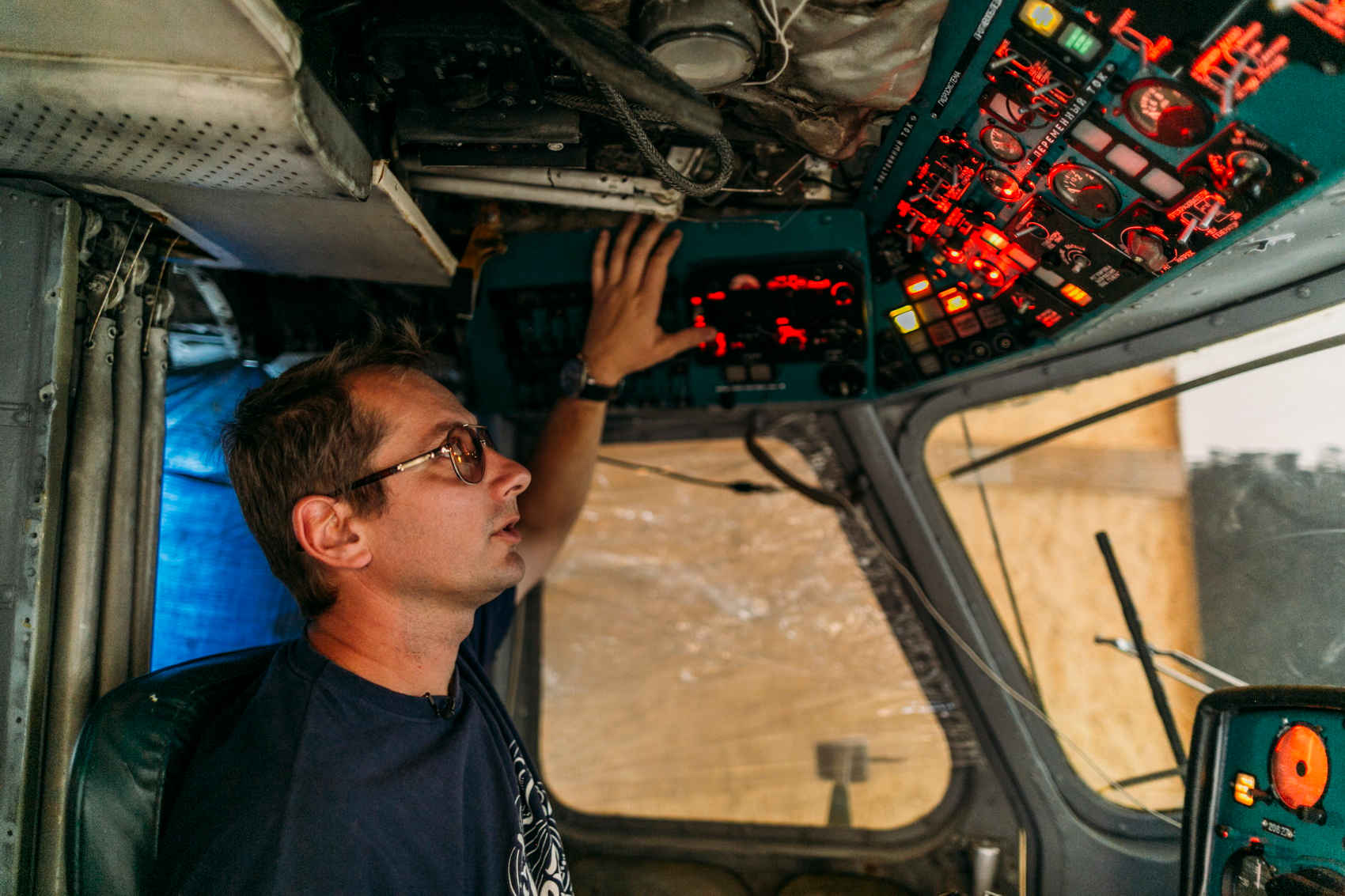
According to Oleksandr Krasilich, there are not many people who work on the simulator now, because it is currently being fixed:
“You learn a lot even just from the familiarization process: the feeling of what a helicopter is, what helicopter control is. Because in reality, it would be very expensive to order a real helicopter.”
During the year, there are more than 50 people who come to check out the simulator. The cost of a 10-minute training is UAH 50. Renting a similar helicopter in good condition costs about a thousand dollars an hour.
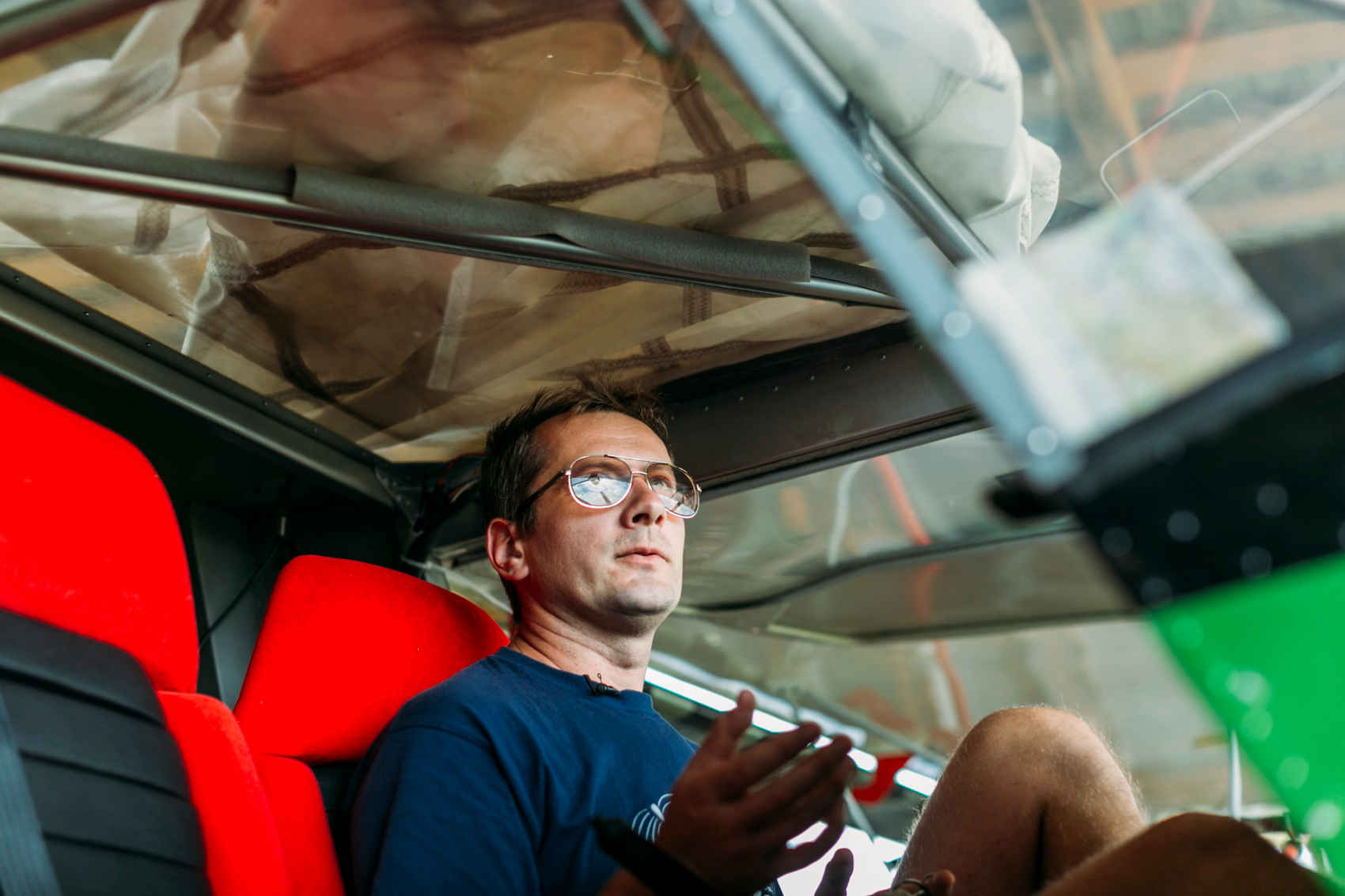
According to international standards to become a private pilot, you must fly at least 40 hours. In general, to learn to fly a helicopter in Ukraine you would need to spend at least 20 thousand dollars. Alexander estimates that the cost of an hour flight on a Robinson R-44 helicopter, which is often used for teaching how to fly, is almost $800.
Alexander likes hang gliders the most, although he rarely flies them:
“In hang gliding in general, the control is not the same as in all other aircrafts. There you hang, there are no steering wheels, nothing. You just move your leg to the right, to the left, turning accordingly. But the position on a hang glider is so natural as if it were a bird. You are just hanging face down.”
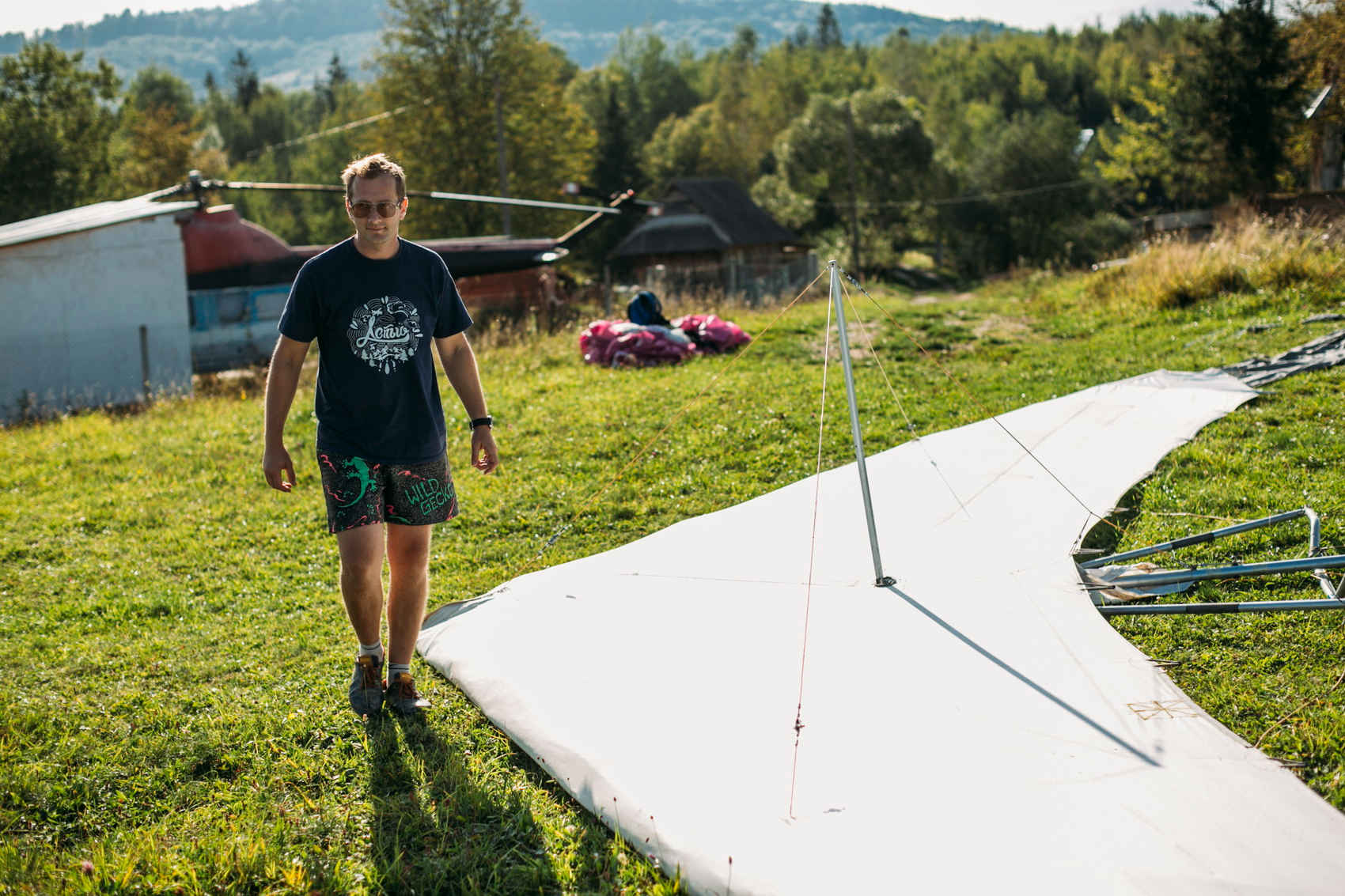
According to Oleksandr, there are several good delta clubs in Kyiv and Kharkiv. In the west of the country, there are only groups of people who come together because of their interests and teach each other to fly.
In the future, Alexander sees the Lukvitsa airfield as a recreation and training base for aviation:
“So that you can come, relax, fly. At best, fly in on one of your aircrafts, take a rest and continue your journey.”
The length of the airfield runway in Lukvytsia reaches 500 m, the height above sea level is about 560 m. The pilots who have landed on this runway claim that it is the highest runway in Ukraine:
“This airfield is not only the highest but also the most difficult to land on in the sense that there are forests everywhere. There is no such thing as a shortfall or overflight. Here you need to land on a certain point or don’t try landing at all. There is a lake here, a big cliff too. It’s easier to get in from there, because the trees are a little lower, from here it’s a little harder.”
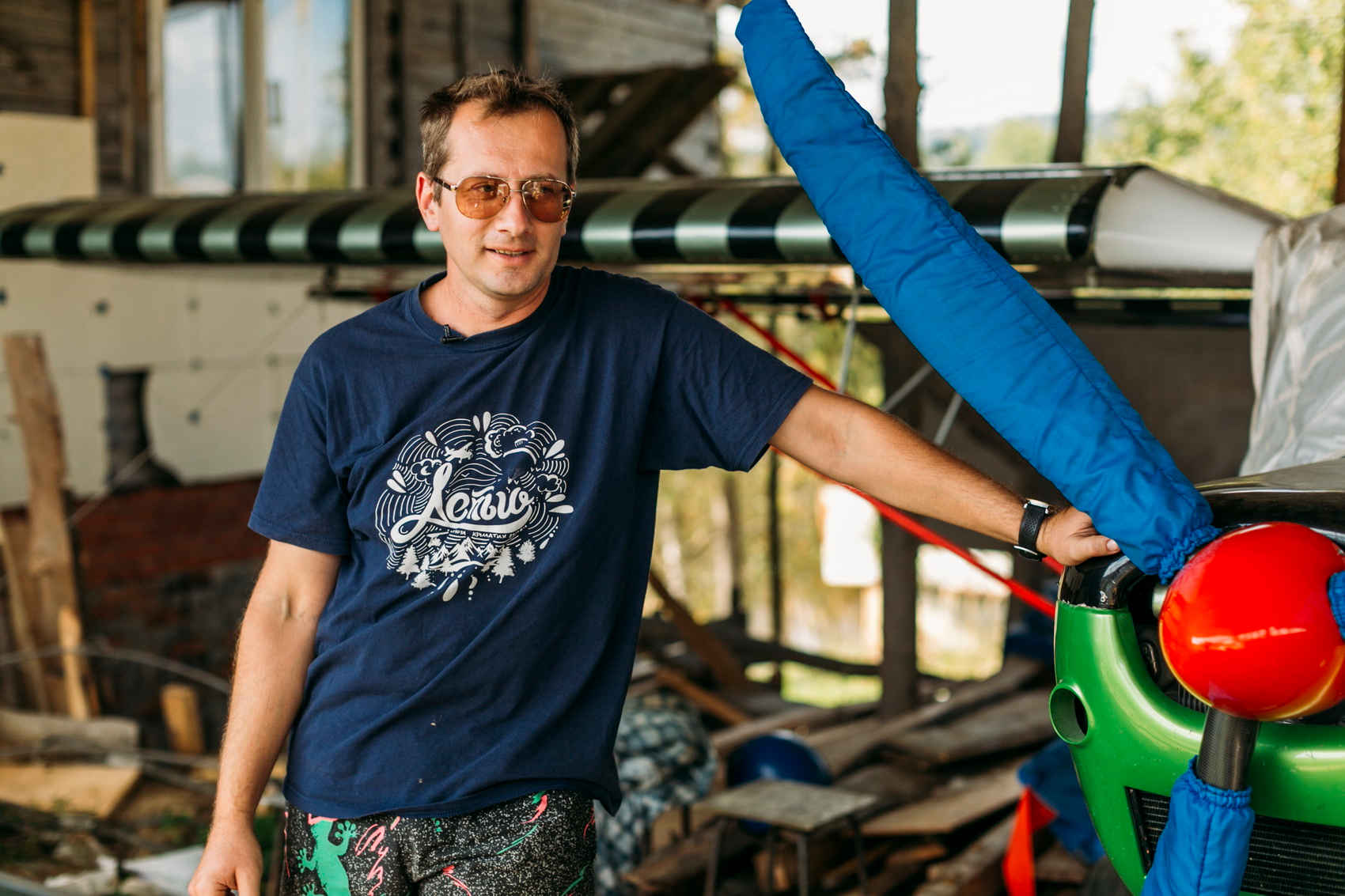
Alexander and small aircrafts
The father and son traditionally try to interest as many people as possible in the topic of aviation, but their aim is for people to become interested primarily for their own pleasure:
“This is our business and we just tell people, look: you can pursue it, you can fly for pleasure, you can fly for business, you can use it for anything. And well, out of hundreds of people, one is always interested and wants to try.”
“The feeling of flying cannot be described. Everyone takes what they want from it. Once I had a passenger who said, ‘Listen, take me for a flight, but I need you to scare me. I love it when it’s scary.’”
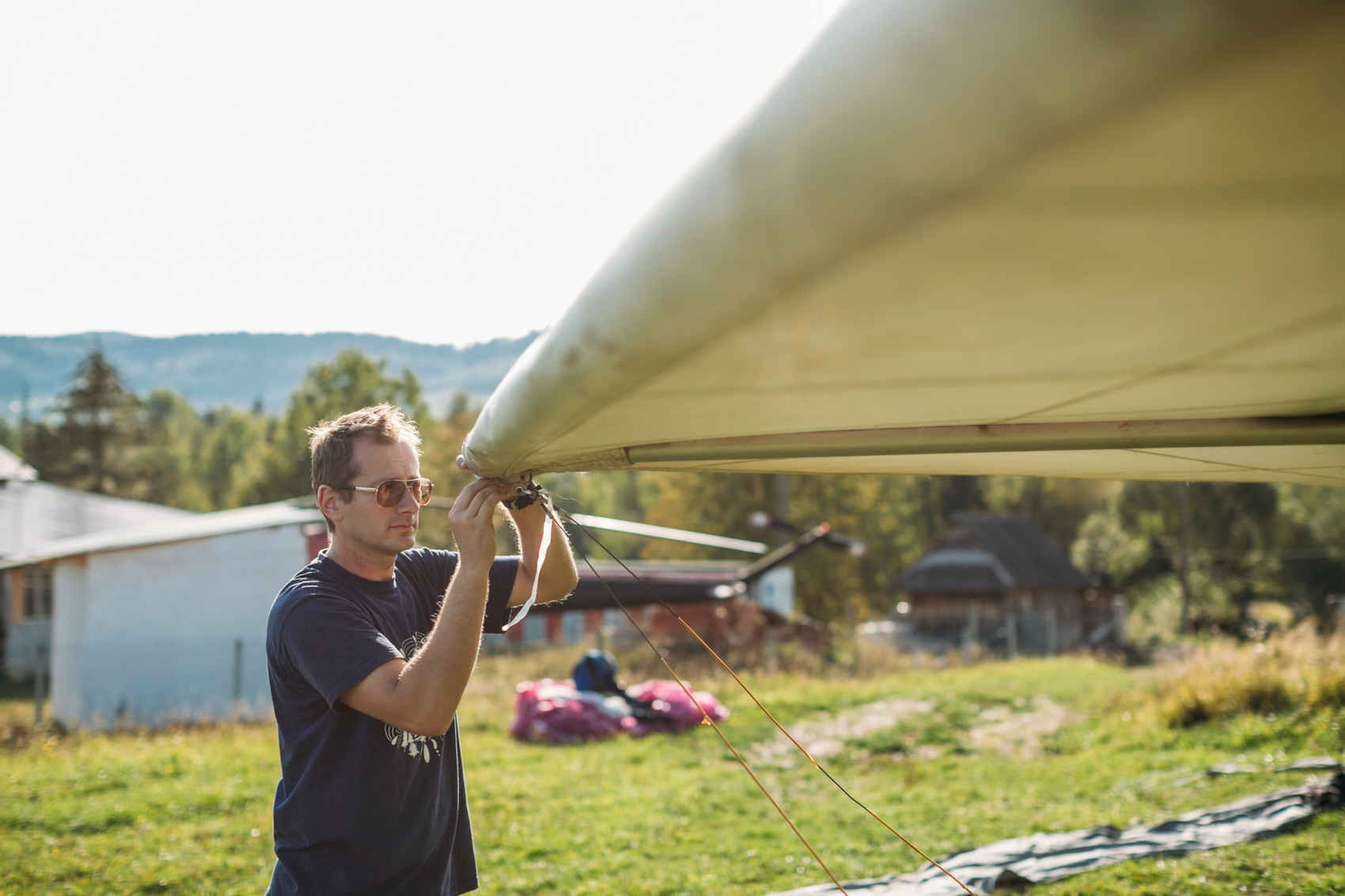
Oleksandr’s first degree is technician-technologist in aircraft production. He also has a degree in energy engineering. He had the opportunity to work at Antonov’s aircraft factory, but he claims that he has no desire to manufacture:
“To sit and twist something, to do the documentation in some random shops. I was not drawn to that. I was drawn to small aircrafts. It’s more interesting here, you twist something yourself, you fly by yourself, you repair something by yourself, you cater yourself.”
Alexander explains the uniqueness of the airfield as follows:
“Everyone likes it in their own way. Someone likes that you can fly here. Someone likes that you can relax here. Someone likes that you can go fishing here.”
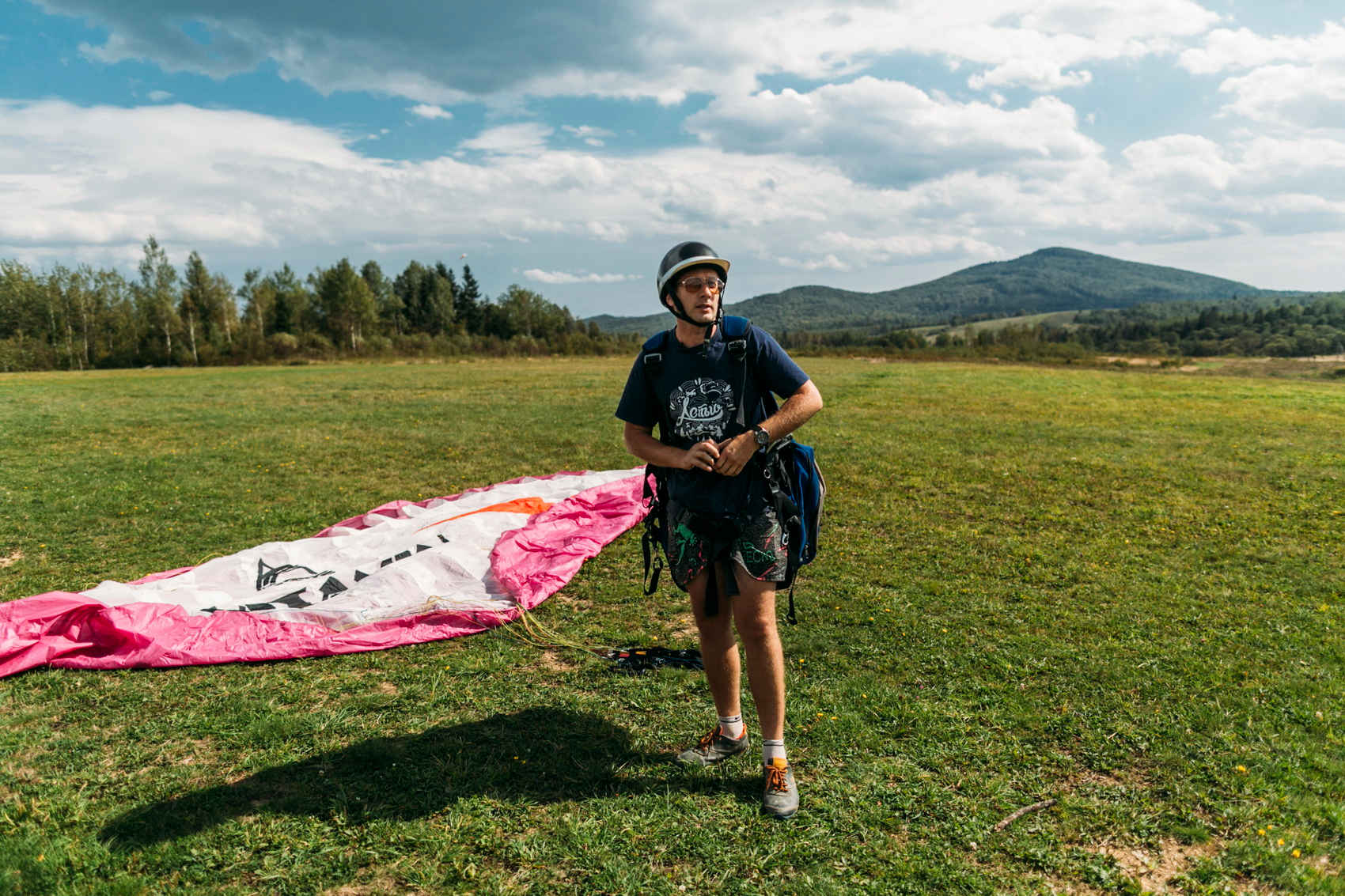
Sasha believes that each area should have an airfield:
“That way you can reach any locality. In America, every city has its own airfield. If we had it in every district, it would be very cool. That way you can move quickly all around the country for business. Aviation is such a diverse field ― you can do anything.”
Alexander draws a parallel between riding the roads on a Rover and flying the skies on a paraglider:
“A paraglider is like a Rover in life, probably. If you want to ride, well, you will not go far on a bike, as well as on a paraglider.”
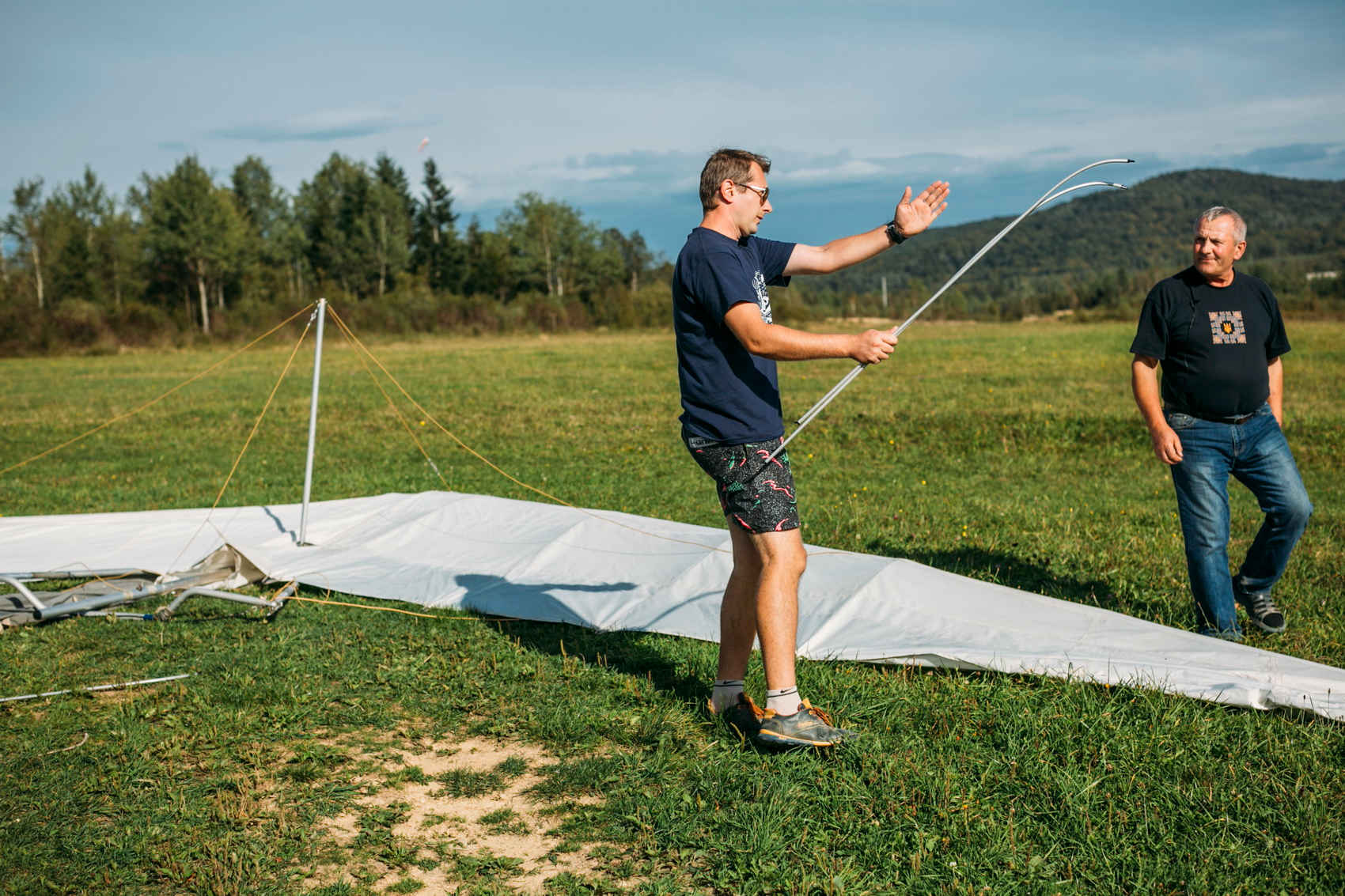
For Sasha, flying on a paraglider is not done for the distance, it’s done for the pleasure; not for the route, but the inspiration:
“I do not fly for the routes. I fly for the pleasure. I always tell people that going for a bike ride in the mountains is the same as going for a walk. For example, I want to go for a walk in the mountains. I take the paraglider. I pick blackberries and raspberries and eat them while flying, that way it isn’t boring on the way down ― then I spread out my things, and fly back down. I land right next to the house, well, in the village at home.”
Alexander is not as enthusiastic about hot air balloons as he is about small aircrafts:
“I’m skeptical about hot air balloons. You need a team, you need the balloon, then you need to launch it, then catch it. Well, it has its romance while flying. Well, I got into a balloon once, it’s as if you are standing on a balcony, you fly wherever it takes you. You definitely can’t fly to pick some blackberries. You can try and fly it once and then leave the air balloon wherever you left it.”
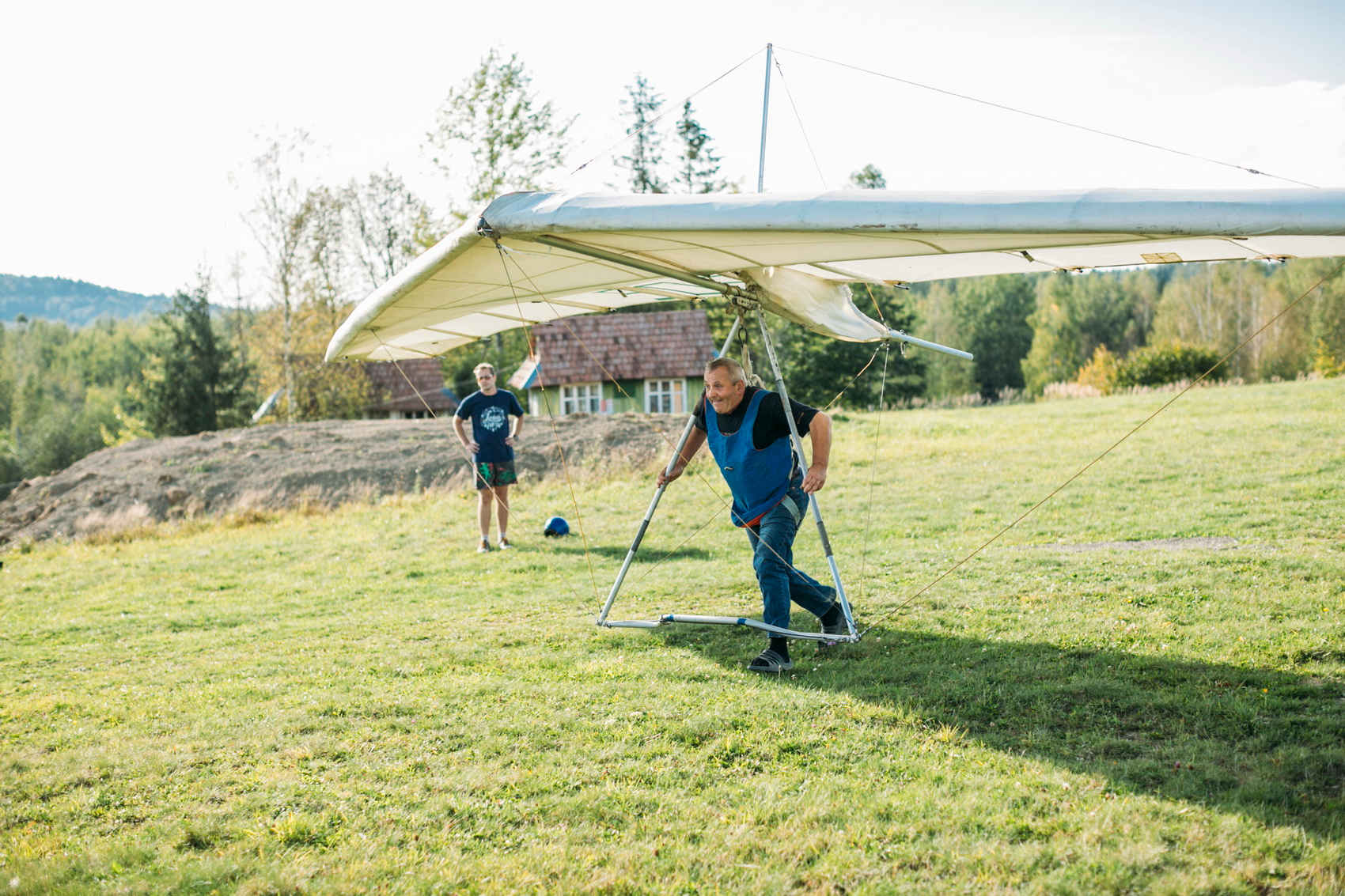
Alexander believes that small aircrafts could gradually become the new public transport:
“I think it will. There are many conversations like these between pilots, we think that “blah-blah-car” should start another type of carpooling ― on a plane. Because many people fly on business trips, or somewhere else. It is not a problem to take two or three more people on board and fly to Kyiv, Zhytomyr, or somewhere else.”
The most expensive thing in this case, says Sasha, is the purchase of a plane. Everything else doesn’t cost that much money, especially for those who value their time:
“It is expensive to buy an airplane. But in fact, the cost to maintain it is very small now. If we consider that the fuel consumption is on average 20 liters per hour, and you fly from here to Kyiv in 2 hours on a good plane, then in general it is not expensive, plus the service cost. For people who value their time, $100 or $50 would not be a problem to fly to Kyiv on their own transport. But everything is based on the cost of the aircraft. A good plane now costs 200 thousand dollars and more.”
It’s the same as a taxi. The only difference is that instead of a car, you get a helicopter.
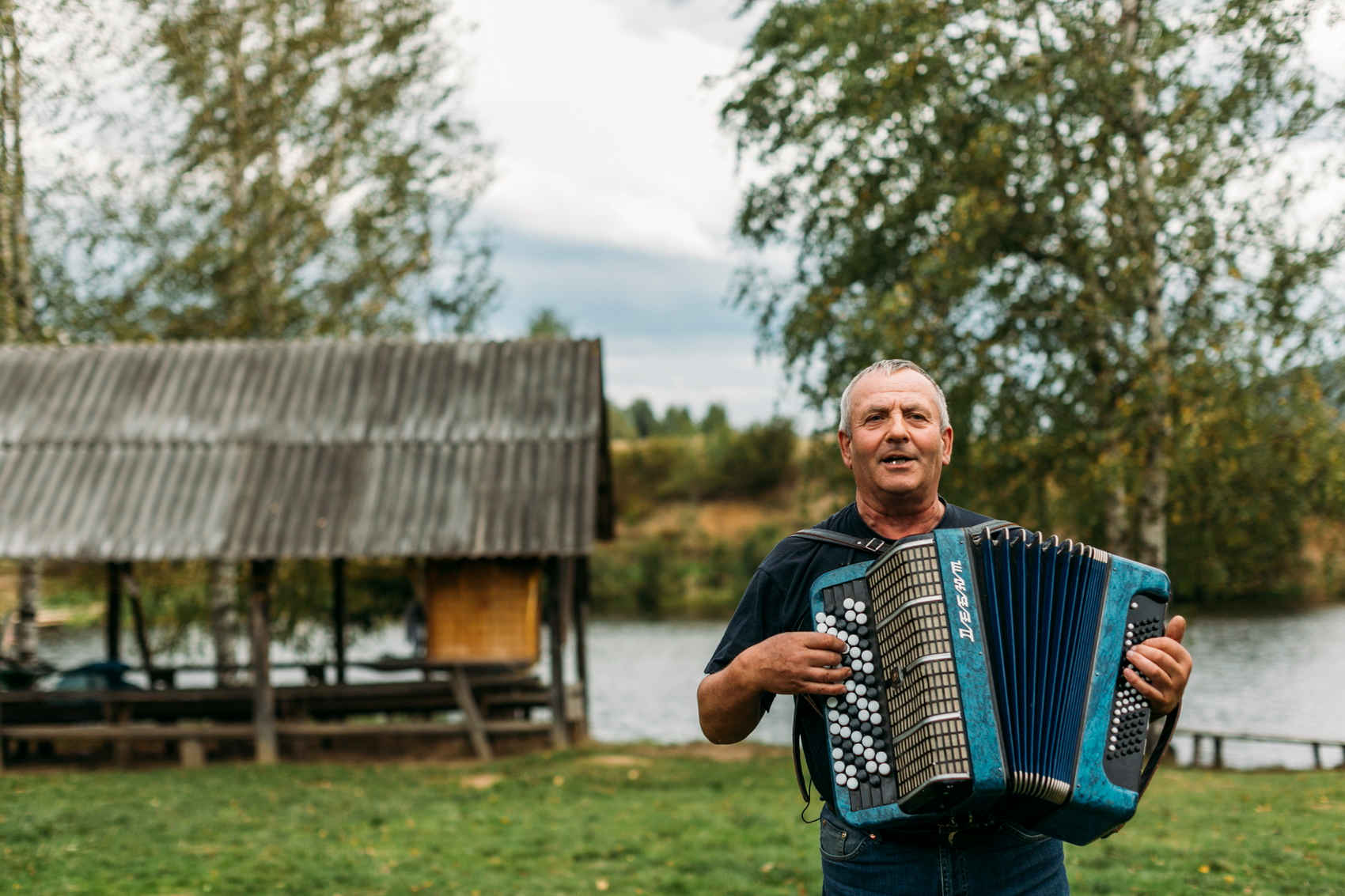
Some not so random meetings
When Stepan Krasilich finally managed to start the airfield, he decided to find Naidenko, the first pilot to take him on board the MI-6 helicopter, as a token of sincere gratitude. A man without whom Stepan would have probably never learned to fly:
“And I started looking for him. I was looking for him on all sorts of social media, I couldn’t find anything. And I wrote a letter to the “Wait for Me” program that I want to find a man who doesn’t know that his gesture of forty years ago led to the “Chota Krylatykh” camp. They were interested in the idea itself. And then they called me from the “Wait for Me” program, they wanted to come. And I immediately realized that they found something. They filmed some material here and took us to Kyiv. He now lives in the Poltava region. The village was probably renamed because it had a Soviet name. It was thirty km. from Dnepropetrovsk. And he is there now. And because of him, this camp exists. Because if I was drawn to anything else or taken somewhere else, all of this wouldn’t exist.”
Life sent Stepan many like-minded people and helpers. And also unexpected financial assistance.
Yurko Ferentsevich, the youngest member of the CC “Halychyna” division, once visited Stepan Krasilich:
“And he said ― we go to the places where we fought and arrange the graves of our brothers. We would like to leave a memory. We liked it here. If you have any views on the development of your home, then submit it to us on paper, if our (brotherhood ― author) likes it, we would like to finance it.”
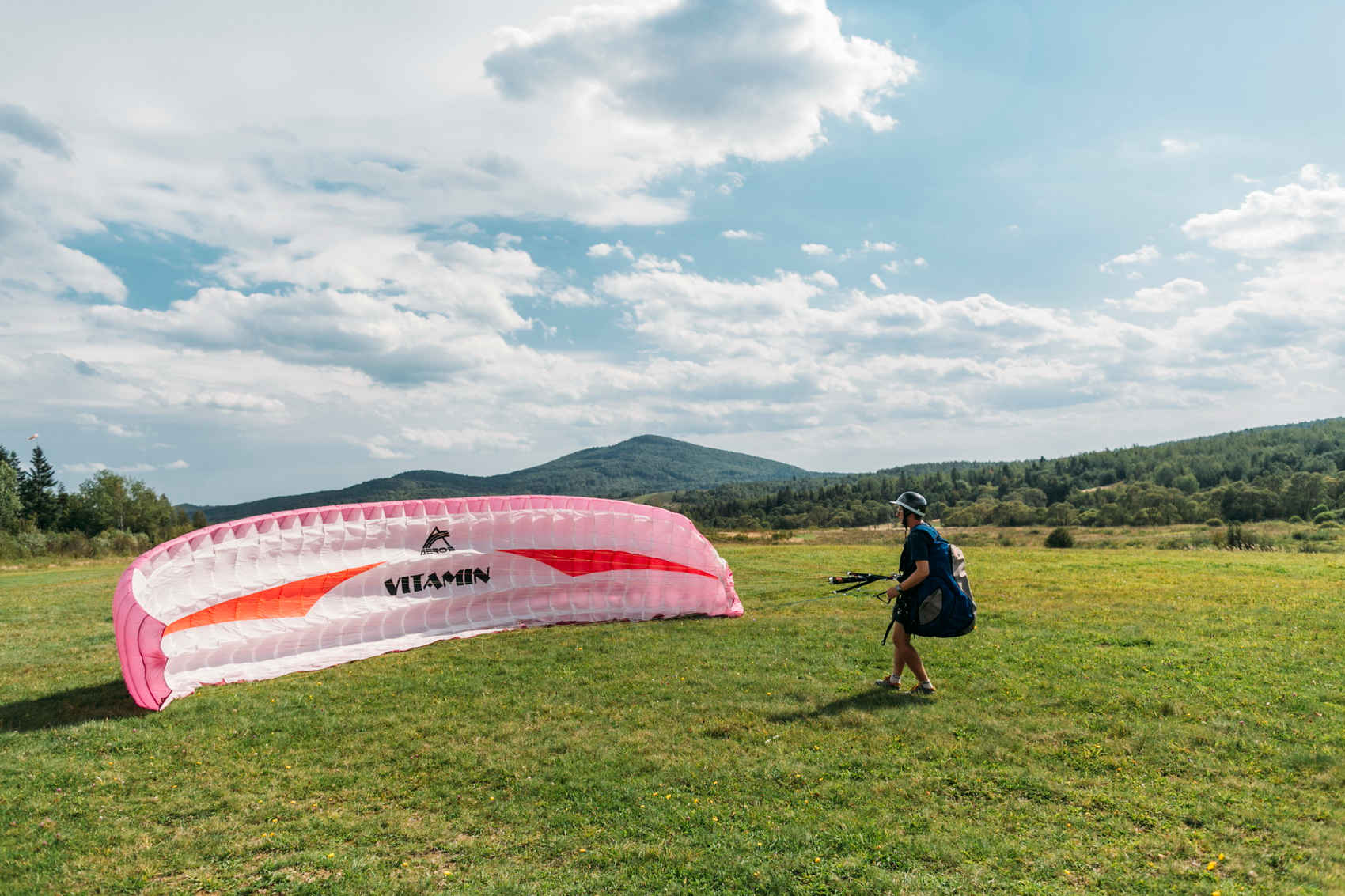
“I took the camera, stood on that hill, and there were no trees here, the trees were so tiny. And I photographed this shore, and in Photoshop I painted huts, a dining room, and that project was called “The divisional bench”. The first hut is bigger, and then all the divisional ones are the same. I sent all of this to New York, and they liked that project. Well, and here it is.”
Shortly afterwards, with the initiative to build a runway here, the same former commander of Stepan Krasilich ― Valery Shcherbakov, who is now deceased, appeared:
“He said: ‘I want a runway. Take everything from there and do it here.’ It took me two years to take everything away, because there had to be a runway here. And that’s how it happened.”
Sometimes a person may consider a certain idea to be something completely of his own, but it will not come to life without the contribution of other caring people. The story of Stepan Krasilich is about that.
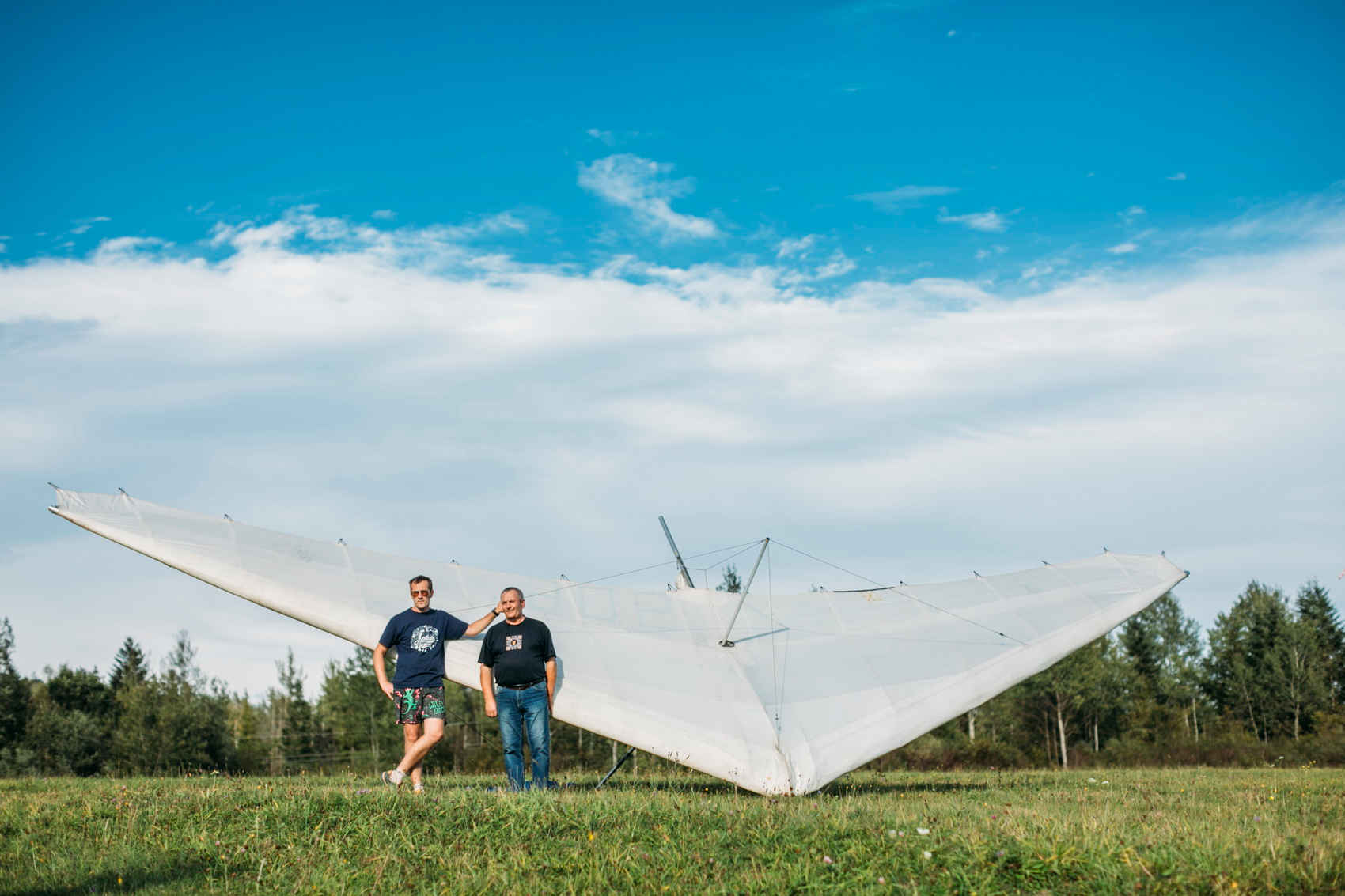
Living refrigerators
In addition to the airfield, Stepan Krasilich is also engaged in a bit of farming, he keeps goats:
“‘I’ve been sitting here for years, you know?’ And why should I go to the store for everything? That’s not reasonable. They graze themselves. I call them (goats ― ed.) “living refrigerators”. They graze and gain weight, and when I need to ― bam, I kill them. That’s it. And I have a bread machine here. When there is no bread I bam, bam bam, bake some bread and get some milk.”
The idea of breeding goats and making cheese was suggested to Stepan by the co-owner of the holding “FEST!” ― Yurko Nazaruk:
“He told me: ‘Stepan, why don’t you get a goat? You have the opportunity here!’. And before I kept goats here, I had boys that lived here, that had nothing to eat, I had them instead of guards. And I bought one goat so that they would have some milk. And then I decided that I needed to start a goat farm. Bam, bam ― one gave birth, then those gave birth, and then there are so many that you wouldn’t know where the babies are. This spring I counted 22 goats.”
Stepan makes Polonyn cheese according to an old local recipe:
“I made vurdu, even Yurko Nazaruk liked it very much. He used to come here to learn to fly, and I would prepare some budza and vurdu for him, and he would take it with him because he said it was very good. And I prepared it very well, because I found some old people, and they told me how they used to do it.”
Stepan not only produces excellent cheeses but also developed his own method for keeping goats:
“The thing is, I do not give them anything to eat. Absolutely nothing. They live like wild animals, but they know where to go to spend the night. When a goat gives birth, I do not hide the babies anywhere, they feed from her. When I need to, I hide the goats in a separate enclosure and milk them, and make budz and cheese. And when I’m tired, I open everything up and they milk themselves, I don’t know them, and they don’t know me.”
In 1978, Stepan Krasilich built his first wooden hang glider and had no idea what his fate would be. Today he talks about plans for the future with great excitement:
“We need to complete this house, we need to build a hangar here, so that young people can come and rivet some aircrafts there. So that they can make them and fly around, and be happy that I did it. Because you learn a lot if a person does it himself.”
He also shares the joy of his students success:
“I once led an aircraft modeling club. I flew in the helicopter and led an aircraft modeling club. So the children who made the models, they would make them in 2 months, and then they would break them in 5 seconds. And they did not cry, if they broke it, they would continue working on them. They already knew how and what to do, you didn’t need to show them, some were already doing it themselves. But they learned to fly, they controlled those models. One flew evenly, one already rode bumps, one made a turn through the center, another was already able to turn the wheels up, and then you have reverse control. Then all the information stays in the brain. Because the brain and the computer are the same thing, because the computer is made by a man. And you already know who created mankind.”
Krasilich’s dedication to his work is very inspiring. Such devotion is the best guarantee of quality. And the existence of the airfield, despite all the difficulties, is evidence that the right approach can ignite a flame in your own lives and make the lives of others much brighter.
The filming process
You can learn about how we went to Lukvitsa and witnessed a fight between two cows on the way there, how we saw a dog house made from the fuselage, and also learned to fly a hang glider in our new video blog.

